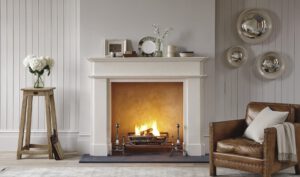Five Fireplace Maintenance Tips
You should clean and inspect your Fireplace Las Vegas once a year. This way, you won’t end up with a costly repair later. Using a professional fireplace cleaning service will also ensure your family’s safety. A certified professional can perform this job safely and efficiently. It is important to have a professional clean your fireplace because it will save you money by preventing damage. And, remember to clean and polish your brass fireplace utensils as well

To clean your fireplace properly, first, empty the ashes. Then, examine the firebricks for cracks no bigger than a dime. You can also gently press on the back wall to check for loose bricks. Never operate a fireplace if one or more bricks are missing, cracked, or broken. Broken bricks allow flue gases to escape into the brick structure, which may transmit heat to the adjacent framing and cause a fire.
The venting system should be cleaned and inspected semi-annually. A licensed gas service technician will check the system for obstructions. They can also inspect and service the gas fireplace. Then, follow these five fireplace maintenance tips to save money and keep your fireplace in good working order. You can also get a handy guide for lighting the pilot light on a gas fireplace. Here are some helpful tips for cleaning and maintaining your fireplace. Once you know the right way to clean your fireplace, you will enjoy it for many years to come.
To clean a fireplace, you can use a solution of trisodium phosphate (TSP) and bleach. Mix six tablespoons of TSP to one cup of water and allow the solution to stand for 20 minutes. Then, scrub with a wire brush. When using muriatic acid, use caution. Make sure to wear a mask and safety goggles before using the product. The solution may be very harsh, so be careful and wear safety goggles when cleaning your fireplace.
After cleaning your fireplace, you can reinstall it. Use the cleaning solution on the gas grate or the surrounding bricks. This will remove any leftover soot. Afterward, you can use a hand broom to wipe the ash off the bricks and the floor. If you don’t have a broom, you can also use a small brush and a solution of dish soap and water to clean the fireplace. You can also use a glass cleaner on the glass doors to keep them clean.
Another important part of a fireplace is the damper. The damper allows the hot air from the firebox to enter and expel from the room. If it is stuck shut, you should not use your fireplace until it is repaired or replaced. Otherwise, you may end up with a dangerous buildup of smoke and carbon monoxide. So, be sure to keep these important parts of your fireplace in top condition. It may help keep you from catching fire!
The fireplace draft is one of the most important aspects of a fireplace when it comes to fire safety. Just like a hot air balloon, heated air rises in a chimney. As more air rises, more is pulled in, creating a consistent flow of hot gas, smoke, and oxygen. The draft also pushes fresh air into the burning fuel. This process is the key to creating a beautiful fire in your home. There are many different kinds of drafts, so choosing the right one for your needs is important.
Convection is another important consideration when evaluating your fireplace’s energy efficiency. When you’re using a fireplace, a major portion of the heat that a fire creates is lost to convection. This is because it sends this heated gas up the chimney and is wasted. Additionally, drafts from the fireplace draw more air than needed, leaving the room colder than before. Fortunately, modern fireplaces are 80% more energy-efficient, and they have many benefits.
Another important feature to consider is the type of fuel that you’ll use. Traditional fireplaces are generally cube-shaped and spacious. But experts redesigned them with a narrower opening and a more slender smoke exit. These new designs not only look nicer, but they also give off more heat and don’t produce as much smoke.
Before using your fireplace, make sure it works properly. Use seasoned wood. This wood should have been cured and dried for six to twelve months. It won’t burn as efficiently as wet wood and will also produce more creosote, which is highly flammable. If the wood you’re using has green spots, it won’t burn as well as dry wood. Wood that’s too green will create a dull thud whenever it hits another log.
